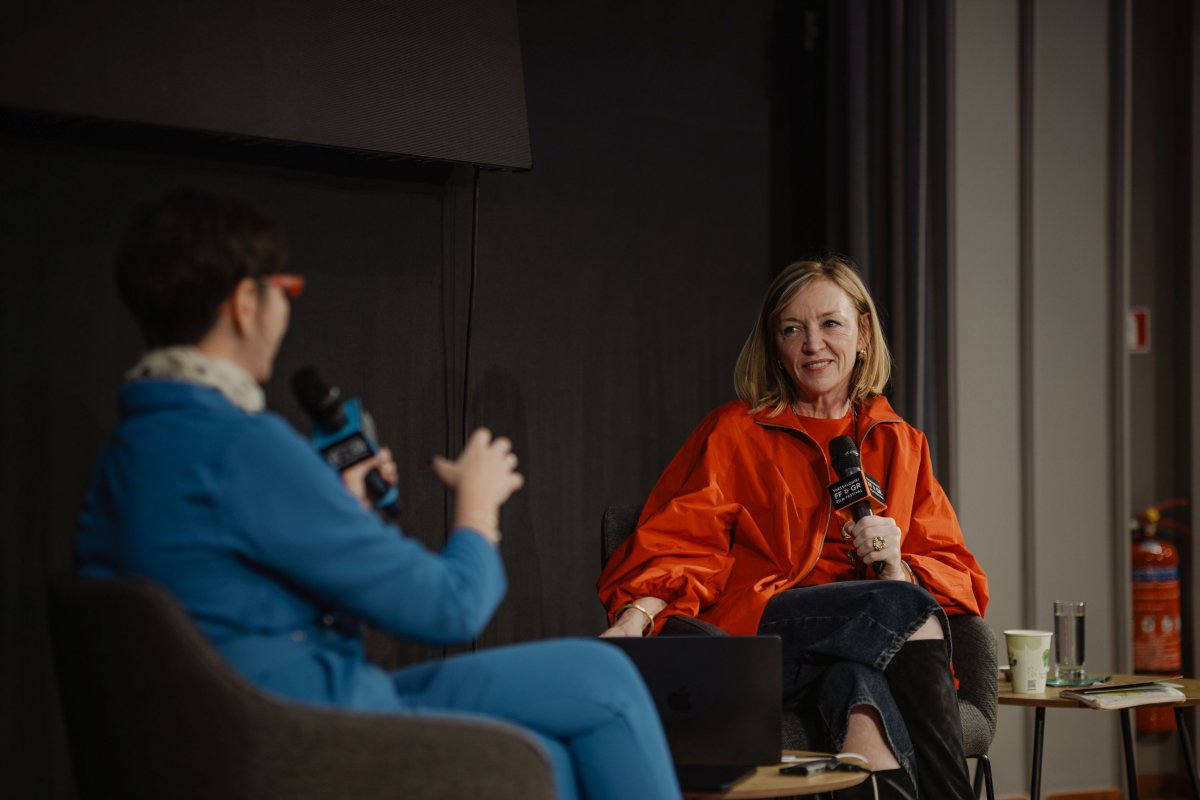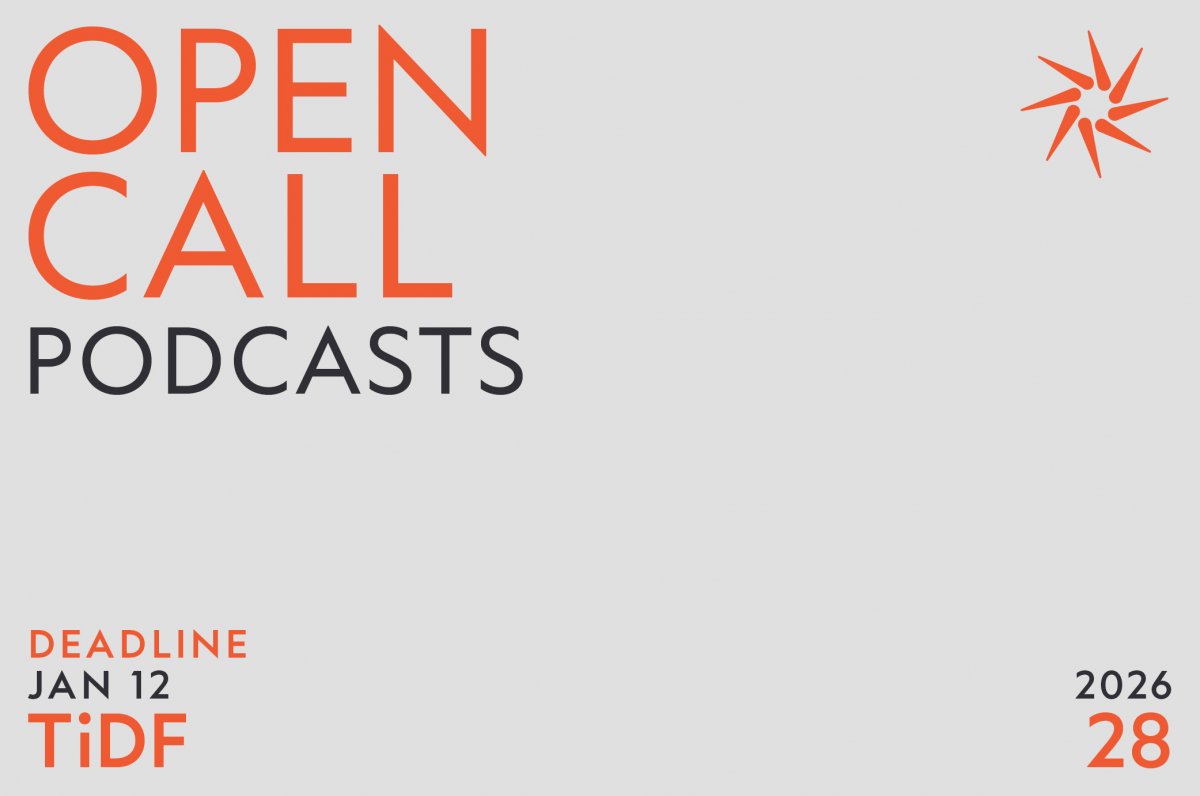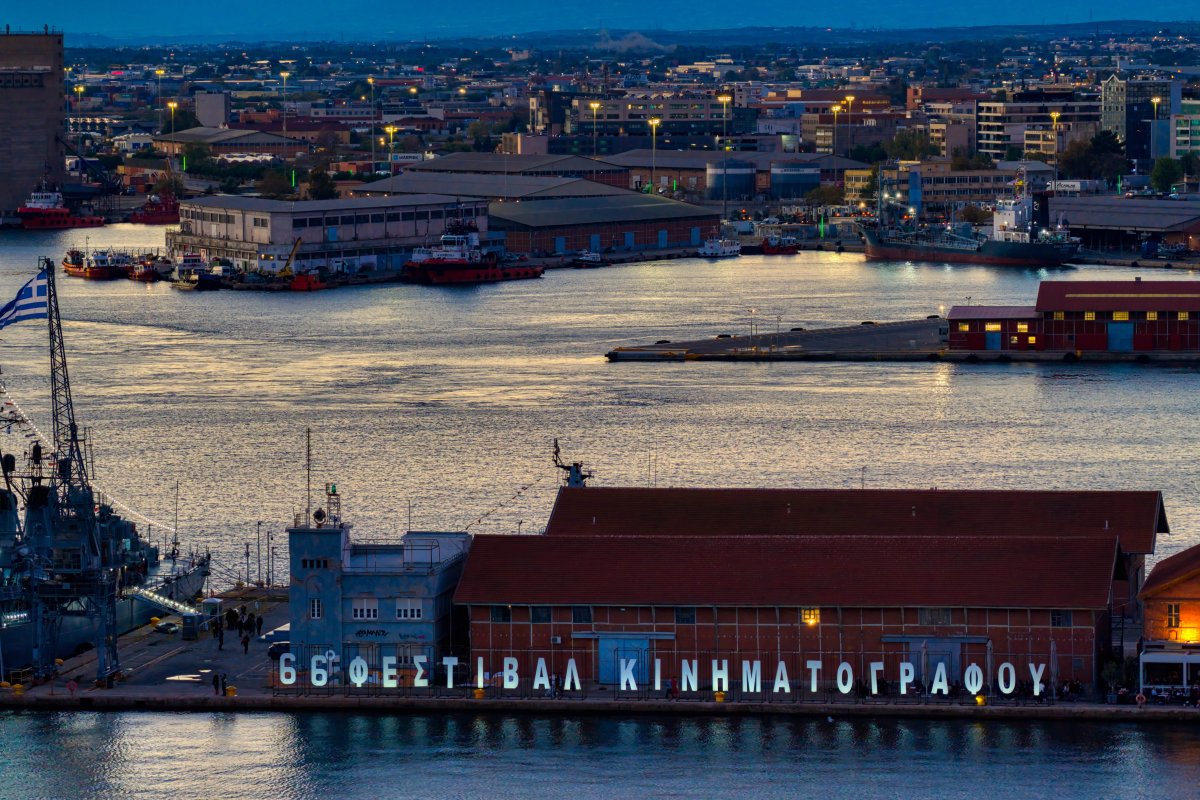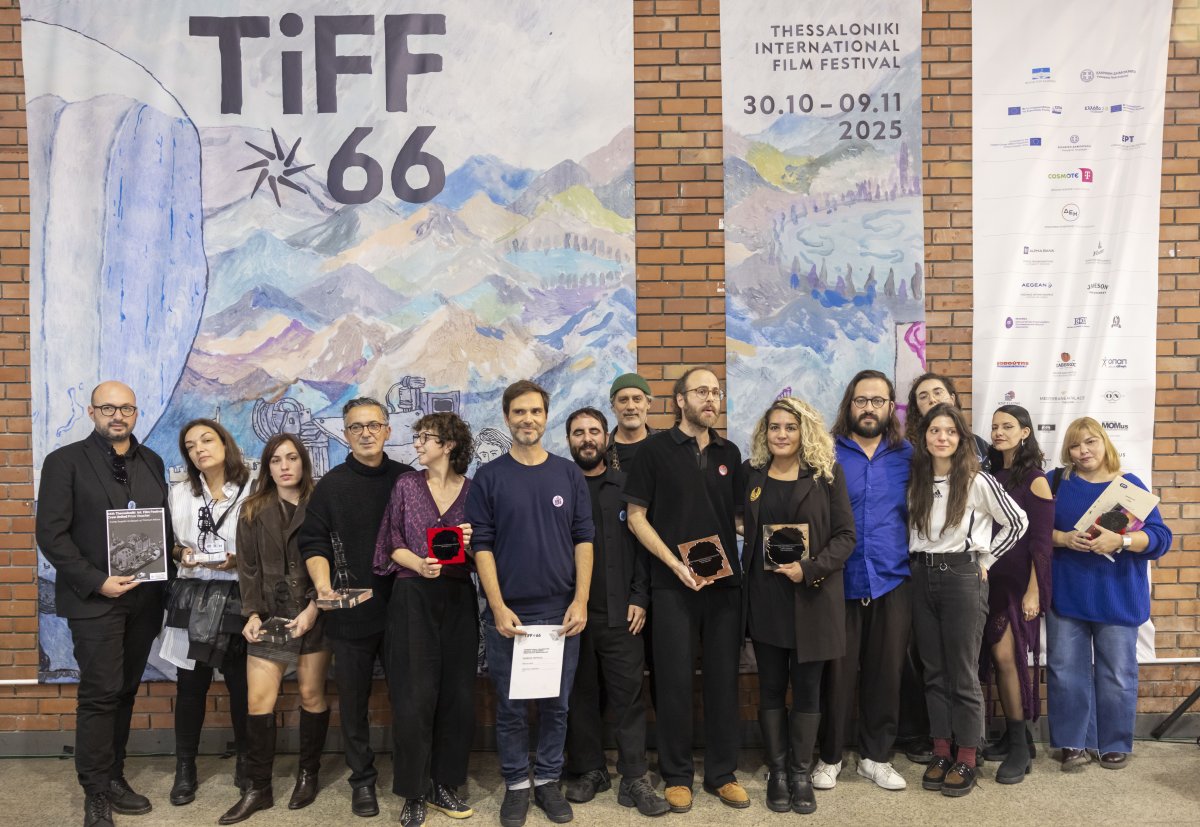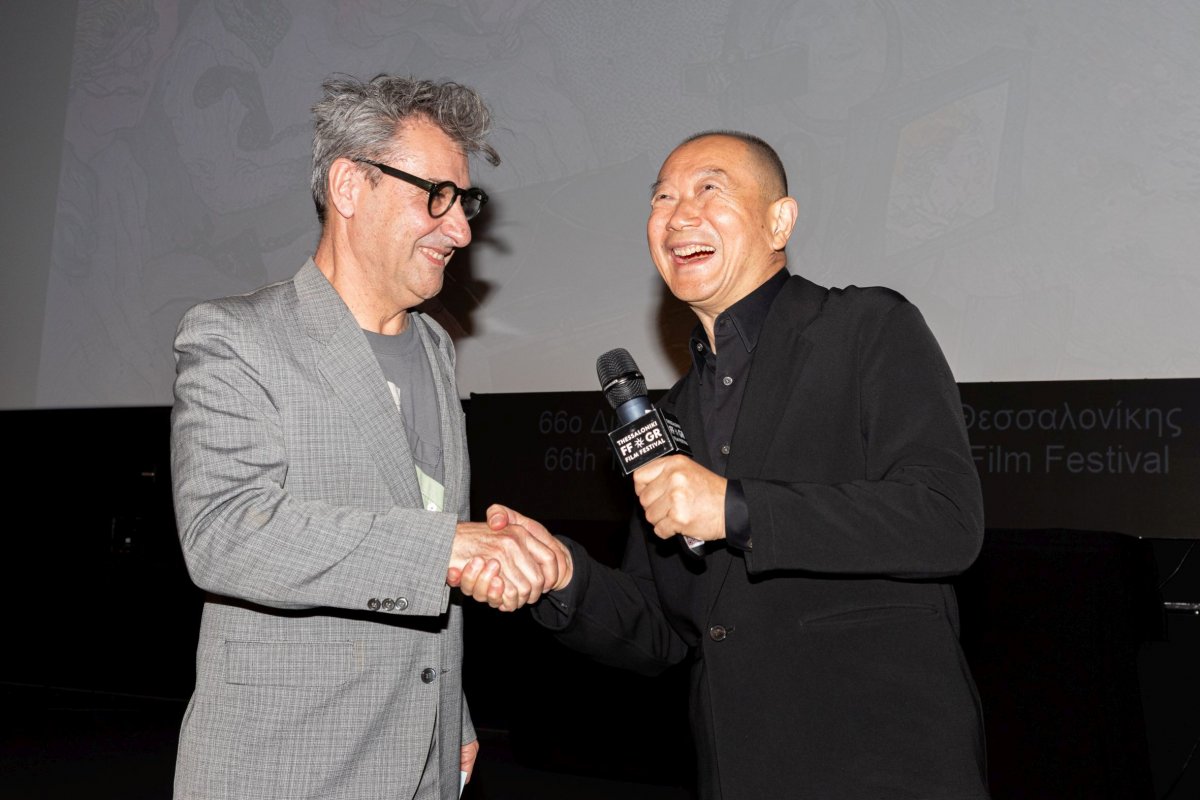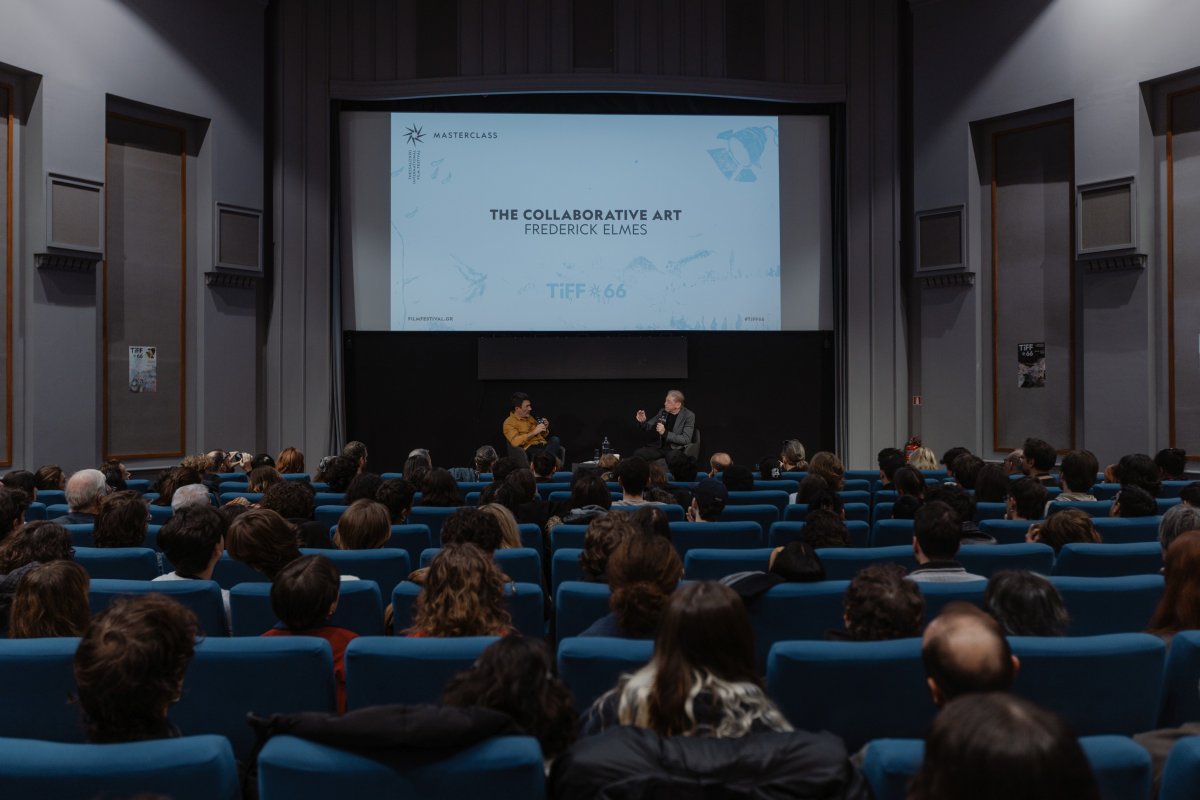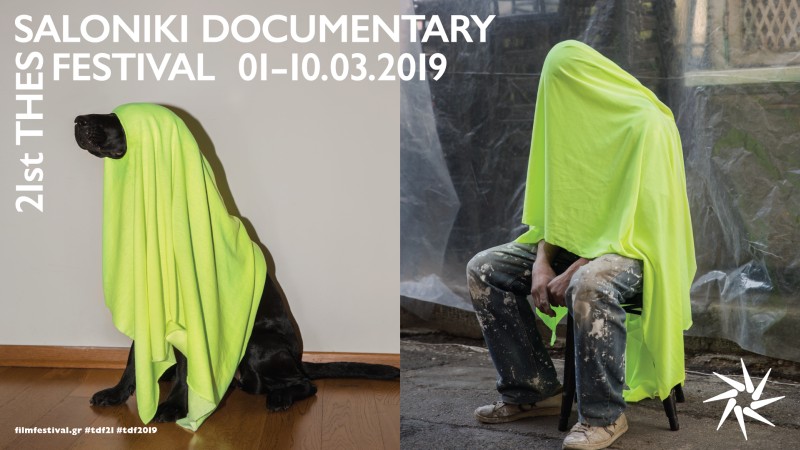Within the framework of the 66th Thessaloniki IFF, renowned costume designer Catherine George, a longtime collaborator of great filmmakers such as Jim Jarmusch, Bong Joon Ho, and Lynne Ramsay, delivered an exciting masterclass, titled “Dressing the Story: The Art of Costume Design,” that centered on the art of costume design in cinema. During the masterclass, which took place on Saturday, November 1st, at the packed Pavlos Zannas theater, Catherine George shared her experiences from her extensive career in filmmaking and fashion with the audience, as well as the ways in which costume design is transformed into a vital tool of storytelling, contributing to the creation of well-rounded and fleshed out characters.
The designer was welcomed by film researcher Geli Mademli: “We are particularly delighted to have here with us the exceptional costume designer, Catherine George. Most of you have already seen her incredible work throughout the entire course of her career, right up to nowadays and Jim Jarmusch’s film Father Mother Sister Brother, screened at the opening ceremony of the 66th Thessaloniki International Film Festival. Of course, we also know her from many more of her great works both in cinema and television, such as Bong Joon Ho’s latest film, Mickey 17, as well as the television series Snowpiercer and The Night Of, all of which we are going to discuss extensively,” she remarked.
Next, Catherine George took the floor, outlining her early steps in the fashion and film industry, as well as her influences and references, which propelled her involvement in costume design. “I grew up in Belfast, where I began purchasing and altering vintage clothes during the ’80s – even though my mother hated the idea of me wearing old clothes. Thus, my affinity for fashion design began. On Saturdays, I watched black-and-white films with my aunt, which sparked my love for cinema. So, I wished to intertwine these two interests. I applied to film schools, studied at Derby in the U.K., worked for eight years in London’s fashion industry, and after graduating, I decided to move to the U.S., where my brother lived. I began working on low budget films as a freelancer, while waitressing to save money. That’s how my relationship with costume design and cinema began,” she initially stated. Immediately afterwards, she gave a brief overview of one of her first endeavors as a costume designer, Oren Mouverman’s film The Messenger (2009), highlighting the extensive research she had to do on military uniforms, so that they would be appropriate for the character portrayed by Ben Foster.
Catherine George then described the creative process that marks the beginning of her involvement in a film production: “The starting point of my work is the script, which I always read twice; the first time I read it as a story, and throughout the second perusal I think about the wardrobe I’ll build, while searching for images. The filmmakers usually have their own notes, as was the case in Father Mother Sister Brother, where the color palette was an integral part of the story. As such, I weave these two elements together, and sometimes I also craft designs – even though I’m not very good. Then, I return to the director, who tells me what he likes and what he doesn’t. This is followed by meetings with the actors, who are usually very enthusiastic when we discuss their thoughts on the characters they embody. Often, they have incredible ideas about the roles they are called upon to portray. Next, I begin preparing the wardrobe, which is followed by the fittings. The feelings that arise when this is successfully completed, are truly unparalleled.” She also spoke about the initial stages of the research: “I go to libraries, galleries, or wherever inspiration may strike, and references can be found. If the film I have undertaken is a period film, I consult paintings and of course the internet. I connect the images I collect and begin designing.”
In response to a question from the audience about the color coordination between the characters in Father Mother Sister Brother, the renowned costume designer mentioned that Jim Jarmusch initially had the idea to combine red and pink but later decided it must instead star throughout the entire film. At this point, she spoke very warmly about her collaboration with Jim Jarmusch and Saint Laurent Productions (YSL): “The film was shot in collaboration with Yves Saint Laurent, who has now become involved in film production as well. Jim called me, saying: ‘Catherine, I have a project which is being shot in Dublin, Paris, and New York, though it is a bit complicated, because Yves Saint Laurent is going to collaborate with you on the costumes.’ We were in New York and they were in Paris, so picking out the colors took us nearly a whole day. It was worth it because when they came out, they were incredibly beautiful, seeing as they have access to the best materials. When we began making the clothes, the production quality was truly remarkable.” Then, Ms. George showed photos depicting the film’s costume selection to the audience, along with images featuring figures and clothes that were the source of inspiration behind the costumes worn by the film’s actors.
Catherine George also made a special reference to her longstanding collaborations with great directors: “They are much like life itself. Connections are made between people, and this is one of the reasons why I love this job. During a project, you work closely with the team, you grow closer to people for specific periods, and in many cases the relationships forged continue over time.” Then, Catherine George analyzed the method she uses to select costumes for different types of films, such as sci-fi films, or westerns, citing the creative process she developed for the television series Snowpiercer and the film Mickey 17 as an example. At the same time, she showcased designs from the first stages of her research on the spacesuits and the simultaneous research she did on images, colors, and fabrics, up to the final costume selection that captures the aesthetics of the period. As she pointed out, photos are always useful as they help her gain insight into the directors’ preferences, helping her better understand where she must place her focus.
When asked about the way she selects her projects, Ms. George said: “I make decisions differently now compared to the past, when things were harder, because now I have a certain trajectory in the field. I always loved films, I was partial to certain directors. However, when I made certain choices solely for financial reasons, I had some negative experiences. Though I think at that point in time it was necessary. Now, I make decisions based on the script and the director, but primarily the latter. This is why I am here, because I like cinema.” Wrapping up her presentation, Ms. George answered questions about the film she is currently working on in London, which is a remake of Dickens’ A Christmas Carol with a dark spin. “I look at paintings, illustrations, and uncover all the different iterations of a story.” In response to an audience question regarding the period she wants her next film to be set in, she mentioned that the ’30s are a particularly interesting period for her, as is the Great Depression, thus concluding another masterclass that captivated the audience.


